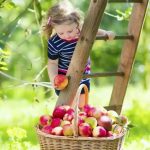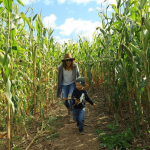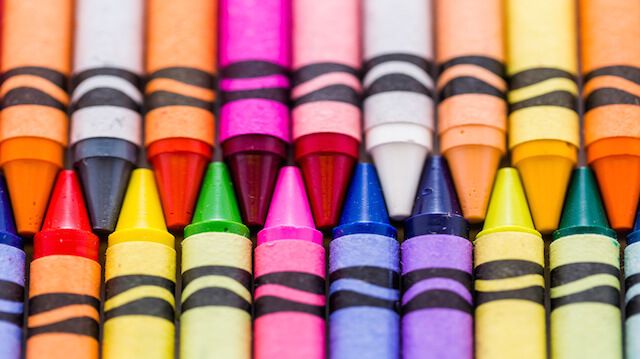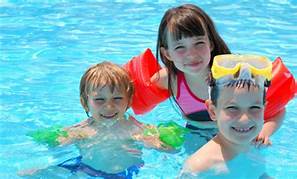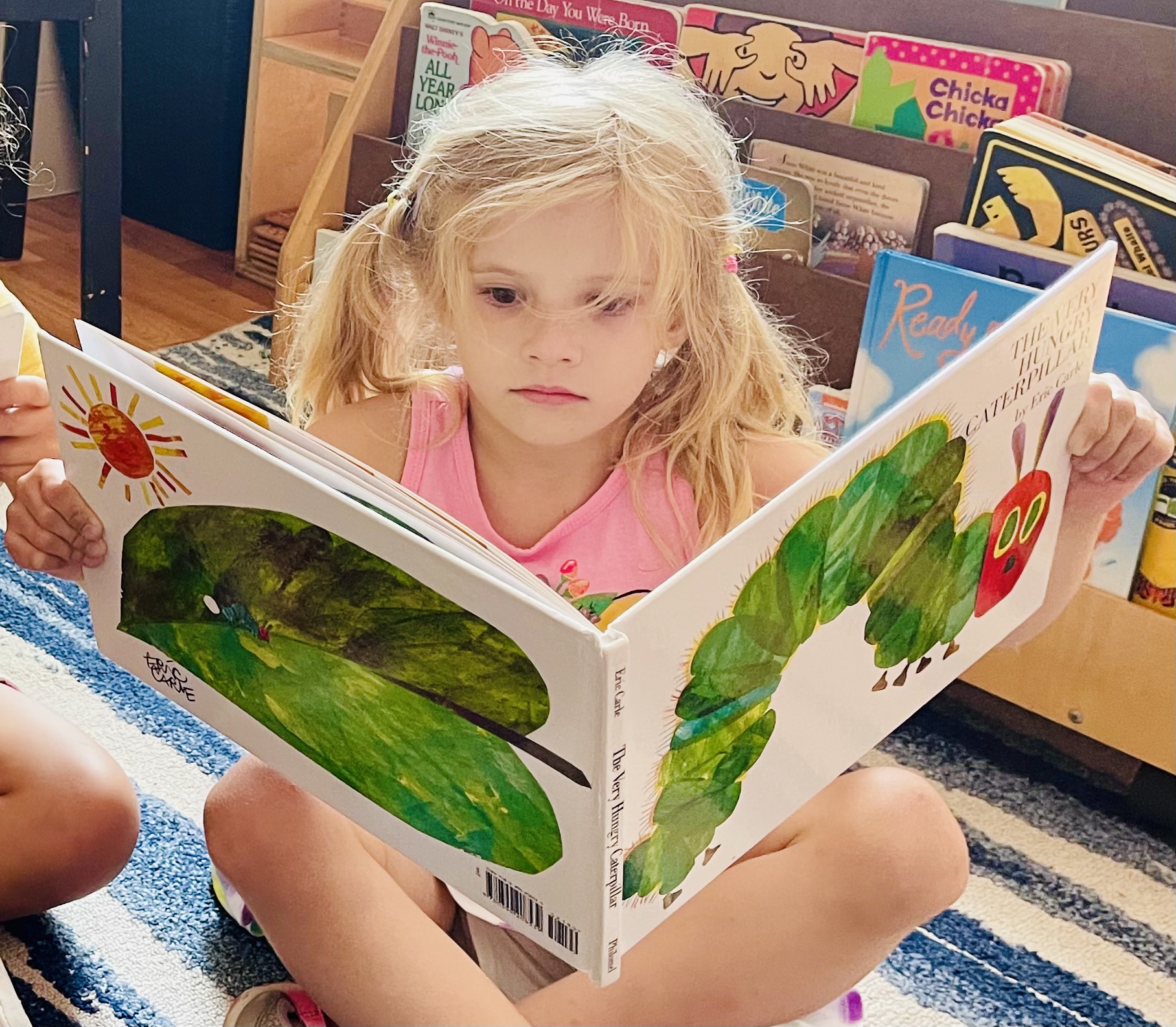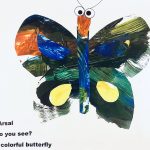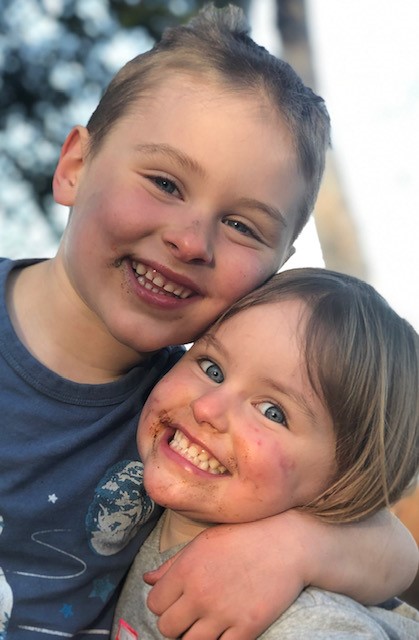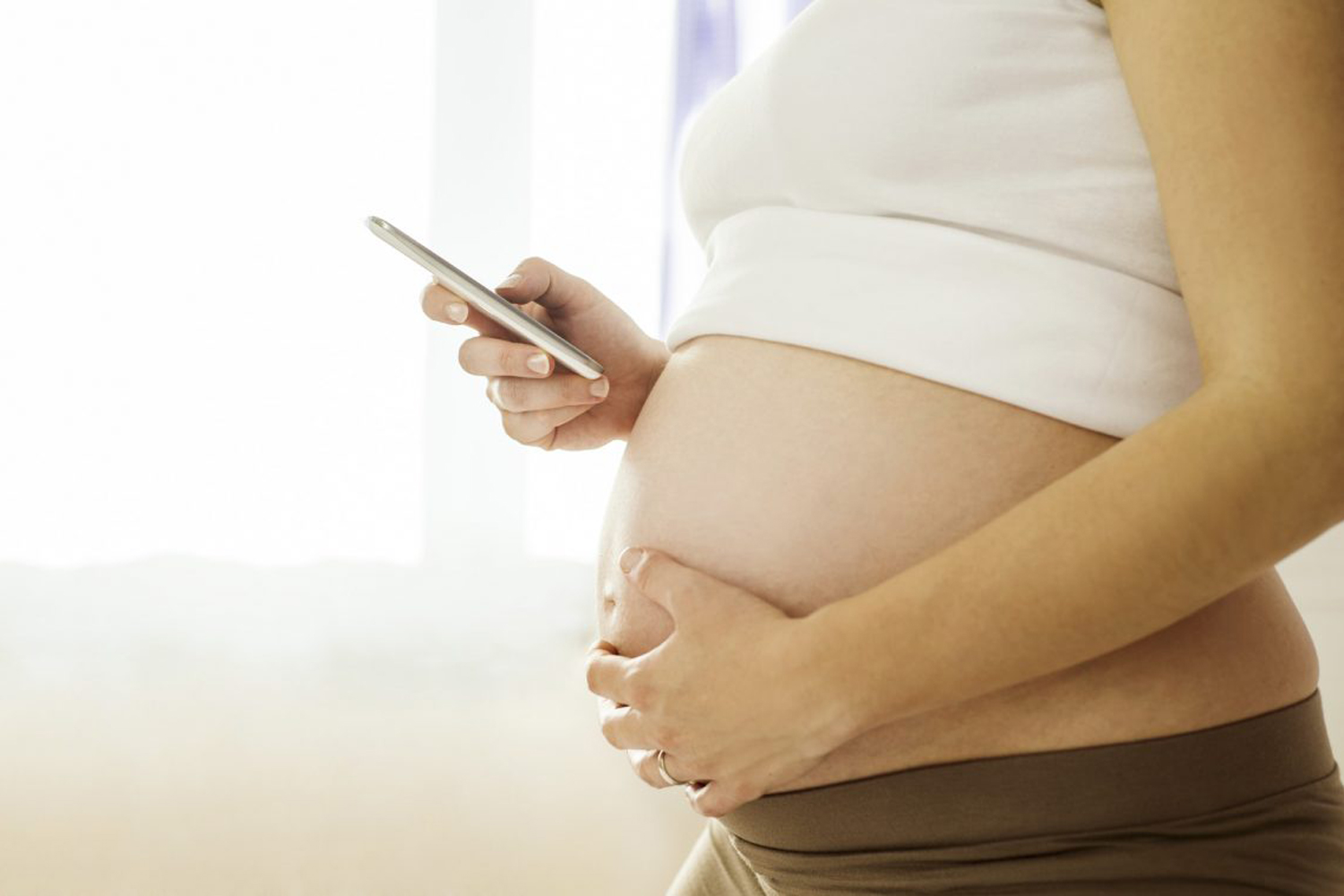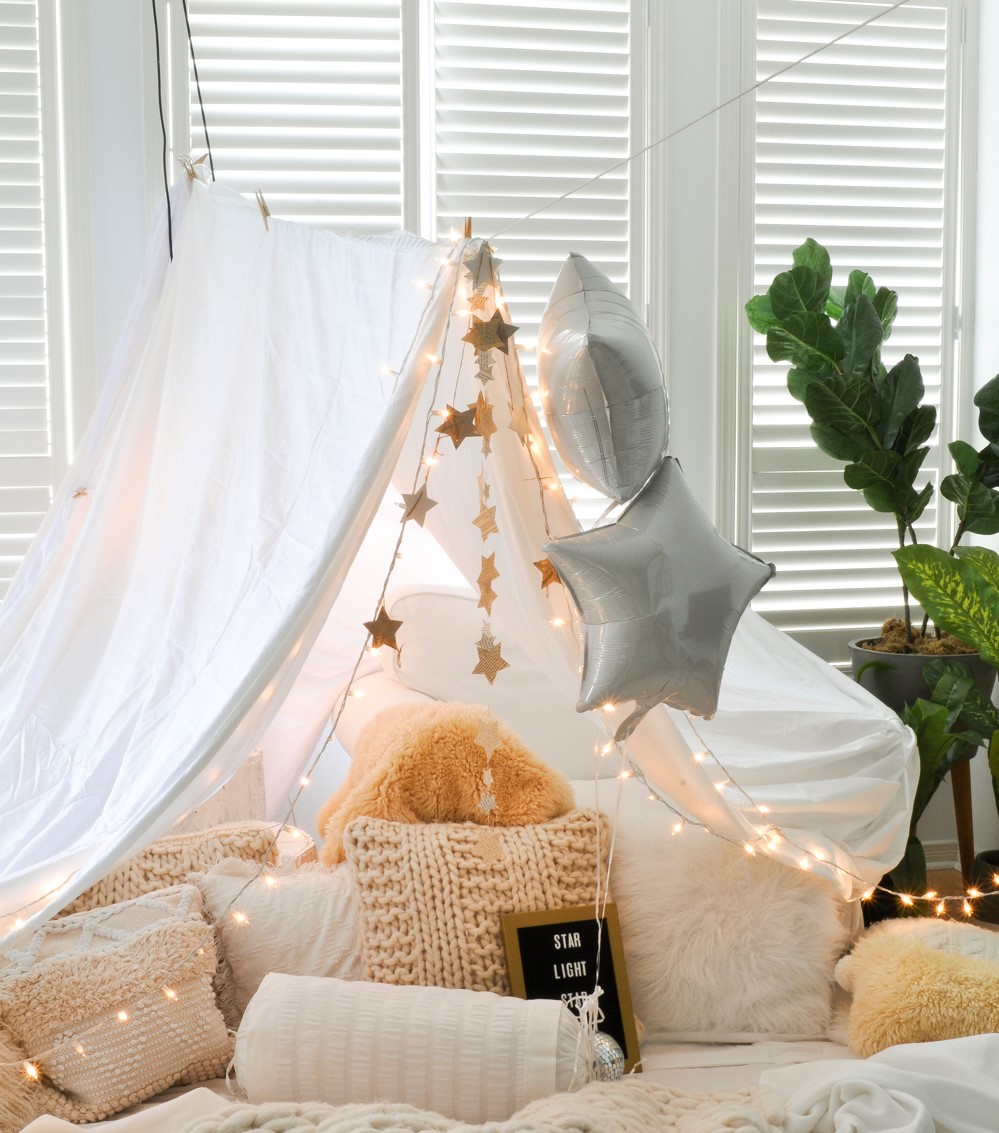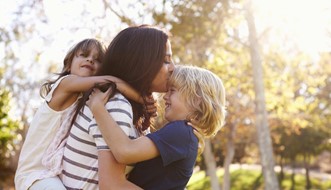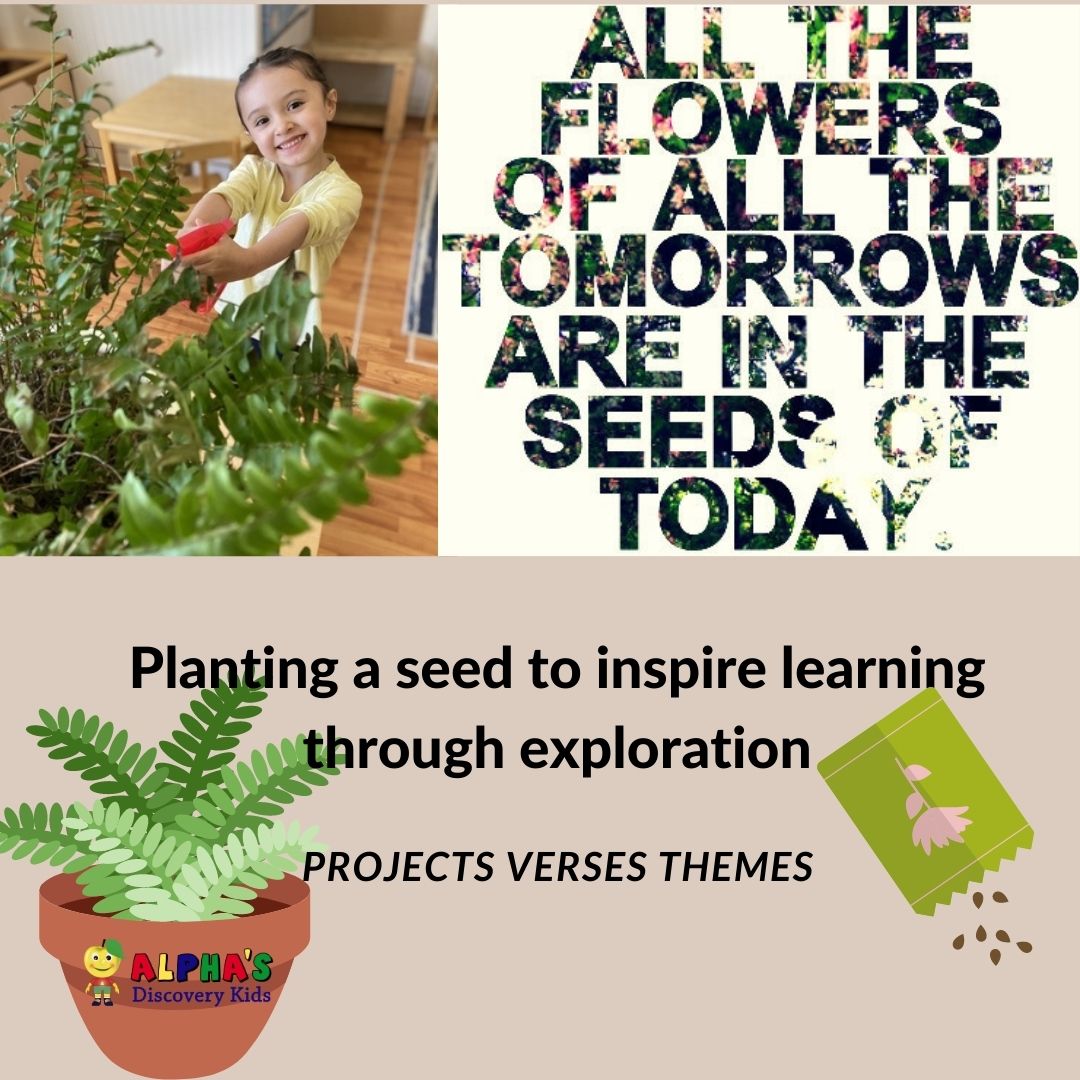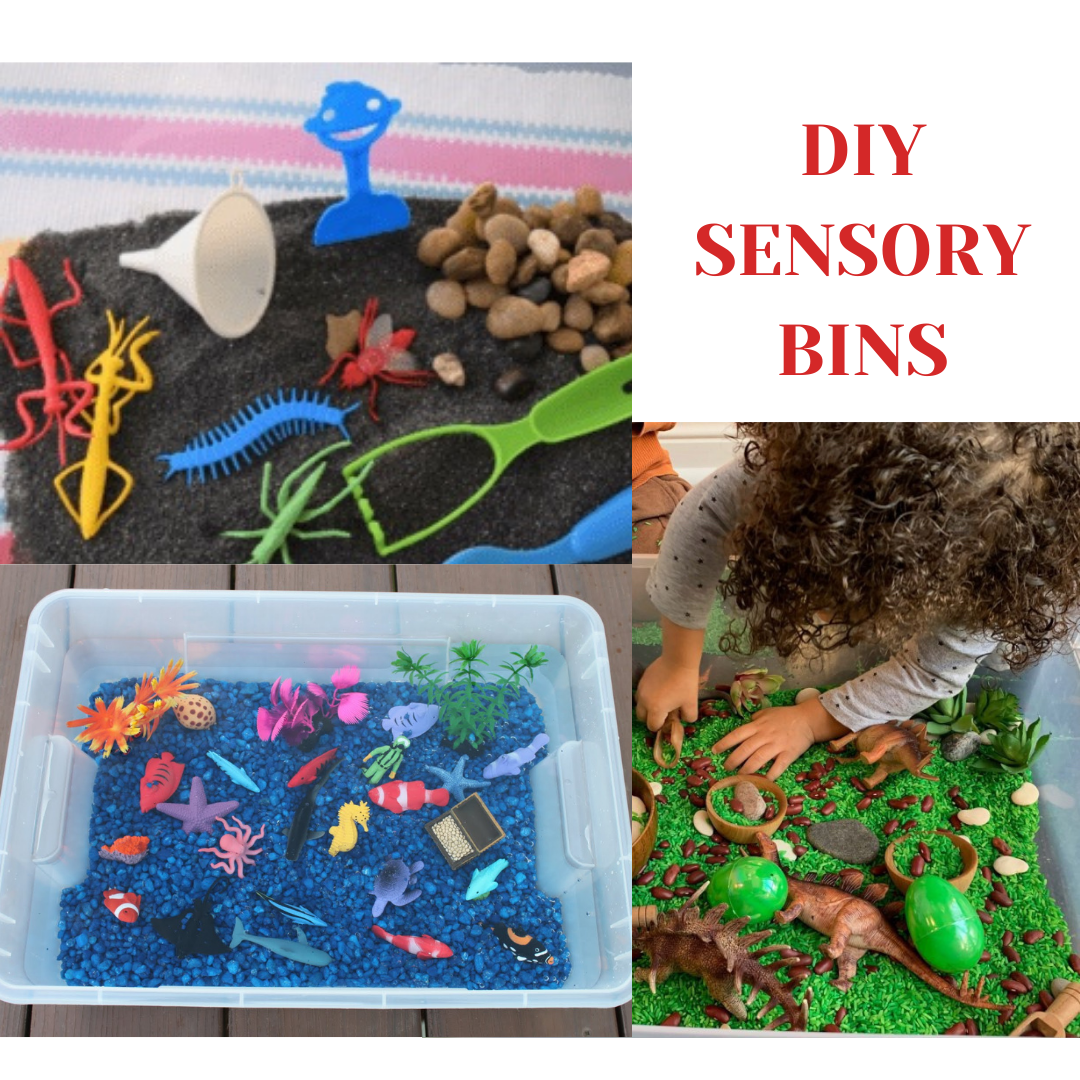Top 4 Fall Family Fun Activities
Top 4 Fall Family Fun Activities
What are your favourite Fall activities to enjoy with your family?
September has arrived and that means as the leaves slowly change colour, we have a short window to still enjoy some warm (or warm-ish) fall weekends to spend outdoors before Jack frost makes an appearance. As sad as we are to say good-bye to summer there is still so much to enjoy in the fall. Autumn seems to come and go so fast so let’s get a jump on the fun with some outdoor activities with the kids. Here are 4 festive fall ideas to enjoy in September and October during Harvest time …. I can already smell the apple pie…

1. Visit a pumpkin patch
As the harvest season comes to an end, there is nothing more fun than picking your own pumpkin – even if you decide not to carve it. They look lovely on your front step. There are so many beautiful varieties and colors. I especially like the white “ghost pumpkin”.
Here’s a list of pumpkin patches in the GTA.
One of our favorite farms for pumpkin picking is Springridge Farm. It is a beautiful farm with lots of opportunities for children to play in the fresh fall air. With the charming backdrop of this colourful farm, you will be sure to capture your kids in action or the most perfect fall family pictures.
2. Enjoy a Fall Fair
There’s nothing like spending the day at a fall fair and enjoying the food, rides and games. Here is a list of fall fairs across Ontario with a list ranging from very old ones in small towns like the Norwood Fall Fair, to the huge Royal Agricultural Winter Fair in Toronto.
There are many fairs that will be taking place soon. Oh, how we have missed fairs!
3. Apple Picking
There are many farms to visit at this time of year to get the festive fall feeling we all love. These farms are not limited to just pumpkin picking! Some farms, like these local favorites, Chudleighs and Downey’s, have fun activities for children, apple picking and lovely shops where you can purchase apples and baked goods. Check out this link for more apple picking spots where you can pick your own apples.
4. Get lost in the moment in a Corn maze
Before escape rooms for centuries many have found fun in the challenge of escaping a corn maze. Fall in Ontario brings a variety of farm activities including some amazing corn mazes which can encompass 20 acres! Some are cut in a seasonal or sports theme, but all are a super fun way to spend an afternoon. If you are feeling brave, check out this link where you can find a corn maze to find your way out of!
Enjoy the season! We would love to see you share your fall family pics with us.
Back to school during a Pandemic: What to expect in 2021
Back to school during a Pandemic: What to expect in 2021
After a warm summer, September has finally rolled around and it’s that time of year when our little ones head back to school or perhaps start attending a new daycare or preschool. We are now 18 months into a pandemic and it’s not over yet! We seem to headed toward a fourth wave here in Ontario which will increase our anxiety levels as we strive to find ways to get back to some kind of normal routine while staying safe.
So, what can you expect for this new school year? Many of the COVID protocols and policies for schools and daycares will continue into the 2021-22 school year. Here’s what to expect:
COVID PROTOCOLS
- Screening – Be prepared for daily screening of your child. Whether your child attends daycare, preschool or any type of school, there will be a requirement for the school to screen the child daily to ensure the child is free from COVID related illness symptoms, has not travelled in the last 14 days and that everyone in their household is also healthy and not exposed to anyone with COVID or COVID symptoms.
- Illness – As cold viruses circulate in the Fall/Winter, be prepared to stay home with your child when they are ill for a few days. Also be prepared to get your child COVID tested if you want them to return to school or daycare quickly. Without testing, your child would need to isolate for 10 days.
- Masks – Masking of children over two years old is still recommended by public health. For children in daycare under 5 years old, masks are not mandatory but still recommended at the parent’s discretion. If your child is between 2-5 years old and attending daycare, you will need to decide if your child will wear a mask or not. Starting in Grade 1, masks are mandatory so ensure your child has a comfortable mask that they can wear for long periods of time.
- Face-to-face communication – Much of the communication between teachers and parents will take place via zoom. In daycares and schools, the use of apps makes it easier to communicate with teachers even though you can’t see them face-to-face on a daily basis.
- Hand Hygiene – Ensure your child knows how to properly wash hands and use hand sanitizer.
In addition to these COVID protocols, there’s the regular back to school preparation as well. Here’s some tips to help you prepare:
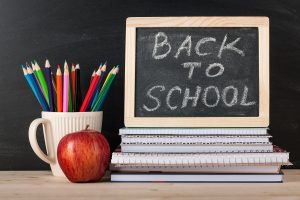
Back to school
BACK TO SCHOOL TIPS
- Set safety rules for travelling to and from school: if your child walks or rides the bus to school, talk to them specifically about safety rules. For children in daycare, you may want to discuss parking lot safety and suggest that they need to hold your hand while walking from the parking lot to the daycare entrance.
- Label all clothing and supplies (but not where visible): It’s important to label everything that you bring to school or daycare to avoid it ending up in the lost and found. Remember to label on the inside so that it is not visible to strangers.
- Ask your child open ended questions about their day as part of your pickup routine: find creative ways to talk about it rather than the typical question “How was your day?” which normally doesn’t give you much info. Make sure your child understands that it’s okay for them to talk to you and their teacher about their needs or concerns.
- Role play: talk to your child about the new teacher/school/daycare and make it positive. If you are anxious about anything, they will pick up on that and it will cause them anxiety too! You can also role play different situations that may come up at school or daycare such as dealing with conflicts.
I am sure that for most of us, the first few weeks following back to school can be a little crazy. Remember to breathe, take time for yourself and enjoy the moment! Before you know it, your kids will be all grown up!
Especially in the younger years, our children will look to us for reassurance about daycare and school more than we think they will. While a cautious parent is a good parent, a wise parent will take great care to monitor the messages that they are sending to their child. If you start early by teaching your child how to stay safe and lay some ground rules, then you are off to a great start with preparing your child for life in the real world.
For more information about COVID protocols in the upcoming school year in Ontario, Visit https://www.ontario.ca/page/covid-19-health-and-safety-measures-schools
For more information about Alpha’s Kindergarten program, click here.
Water Safety Tips
Water Safety Tips
Water safety is an important topic that we must educate ourselves about as parents. Knowing how to be safe in and around water is one way to keep your family safe. While water safety is somewhat of an unpleasant topic, it continues to be an important one. Even if you think you already know everything about water safety, take a moment to review these educational tips. I few minutes of reading may help to save a life. Knowing the risks is the key to preventing injuries and or death.
Children are naturally drawn to water and quickly discover the fun of splashing in it. Sensory play especially with water should be encouraged but ensuring that this is done safely is essential. You can never be too careful when it comes to water safety whether you are inside or out.
Close attention needs to be placed on safety around water to prevent drowning, scalding or electrocution. Regardless of your child’s age – whether infant, toddler preschoolers, school age or if you have young, curious, or even clumsy pets, it’s important to know that the number one safety tip is Supervision.
Here is why …. Did you know that babies can drown in as little as just 1 or 2 inches of water? It can happen silently, and within seconds, especially infants, because they don’t have much neck and muscle control.
Remember: Never leave your child alone or in the care of another young child in or near water—not even for a moment.
Most child drownings inside the home occur in bathtubs, and more than half of bathtub deaths involve children under 1 year of age.
Here are a few simple safe water tips to live by and share with anyone who cares for your child.
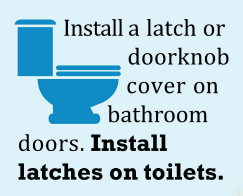
Bathroom water safety tips:
- Put toilet lids down. Install safety latches or locks on all toilet seat lids to keep curious little fingers from lifting them.
- Pull the plug on the tub. Consider removing the bathtub drain plug when it’s not in use to avoid the tub filling if a child turns on the faucet.
- Keep the bathroom door closed. As an added layer of safety, use safety latches or doorknob covers to keep bathrooms closed.
- Check the water temperature. Before putting your baby in the bath, check the water temperature with your wrist or elbow. Tap water that’s too hot can quickly cause burns serious enough to require a hospital visit or even surgery. In fact, hot water scalding is the top cause of burns among babies and young children.
- The hottest temperature at the faucet should be no more than 120 degrees Fahrenheit to help avoid scald burns. In many cases you can adjust your water setting to not go above this temperature.
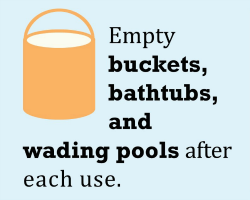 Outdoor water safety:
Outdoor water safety:
- Never leave a filled, open-top water container unattended. Whenever they’re not in use, be sure to completely empty any liquids in containers such as:
- buckets and pails used for cleaning or painting
- wading pools
- coolers with melted ice
- large water bowls for pets
- trash cans or recycling bins that may collect rainwater
- secure swimming pools, including large, inflatable above-ground pools and other temporary pools, should be surrounded by a fence on all 4 sides.
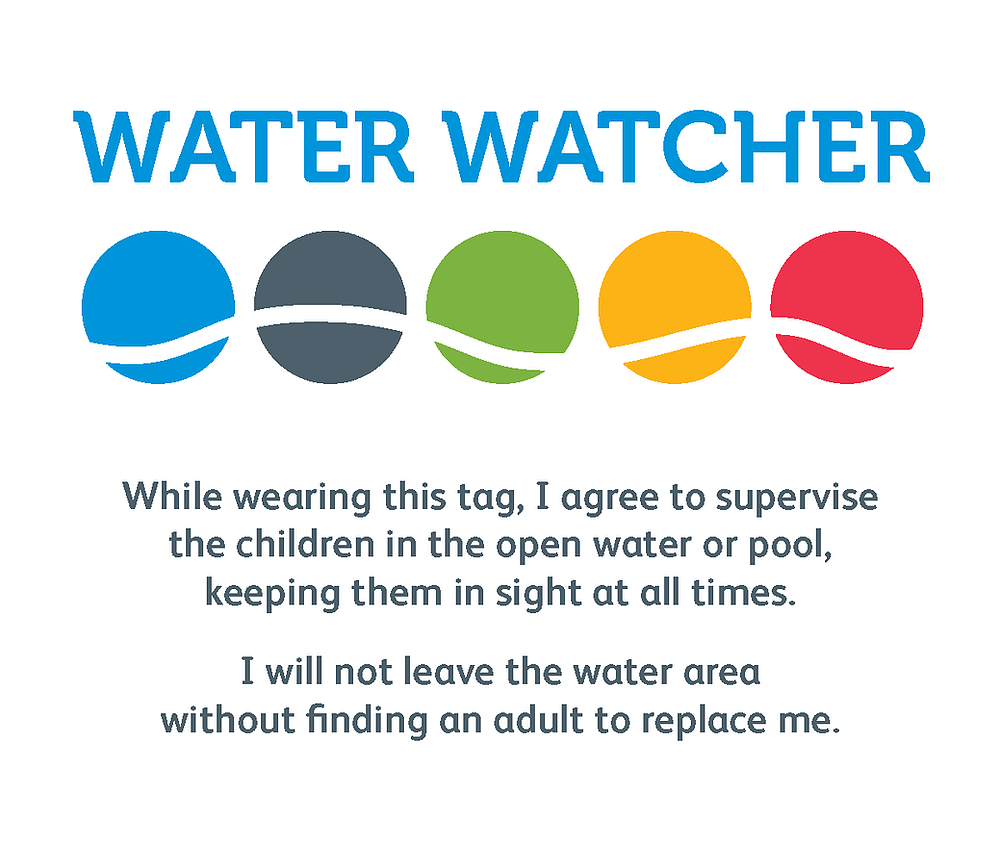 Pools:
Pools:
- Assign a qualified Adult or youth with life saving certificate to supervise children
- Ensure life jackets and flotation devices are used with supervision
- Ensure Life preservers are readily available
- Use a water watcher sign. Assign a “water watcher” to supervise at all times and ensure they know their responsibility.
- Pool fences should: be at least 4 feet high and have no opening under it or between slats more than 4 inches wide.
- Check the gate frequently to be sure it works and keep it always locked.
- Keep toys out of the pool area when not in use so that children are not tempted to try to get through the fence.
- Be sure to always cover and lock hot tubs and spas right after using them.
Use touch supervision
- Have a towel within reach so you can always keep a hand on your baby so that you are within arms reach at all times.
- Before your baby begins to crawl or walk, check your home and surrounding area for any other potential water dangers.
![]()
Water and electricity don’t mix
- Be sure to keep electrical cords, battery powered devices and other power sources away from water and out of the reach of children.
It’s important that you teach your children water safety!
- Teach children the guidelines, rules, and boundaries around water that they will understand and follow.
- HAVE FUN AND PLAY SAFE!
Why we love Eric Carle books to promote early literacy
in loving memory of Eric Carle
One of our favourite books to promote early literacy at Alpha’s Discovery Kids is The Very Hungry Caterpillar, by Eric Carle. In fact, it was the inspiration for our metamorphosis project last month. Amid our metamorphosis project, author and illustrator of this iconic children’s book, Eric Carle passed away on May 23rd, 2021, at the age of 91. Eric Carle will live on in our hearts and through his legacy of great literature.
The Very Hungry Caterpillar was among many fantastic Eric Carle books known around the world. Other beloved titles from Eric Carle include The Very Busy Spider, Brown Bear, Brown Bear, What Do You See? and The Artist Who Painted a Blue Horse.
For many educators, parents and children of all ages, his works have been a staple in their children’s literature collection. Carle’s incredible collection of work has earned him a variety of accolades, including the Children’s Literature Legacy Award.
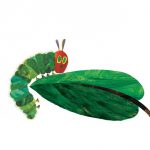
Here are three reasons why we love Eric Carle books!
1. Predictive Text
Predictive text builds confidence in young readers. In most of his early literacy books, the designated format repeats throughout the text and allows children to predict it. When young readers pick up on the pattern, you see the sparkle in their eyes. At first, they read along with you. Then, they use the pictures along with the pattern to feel like they are “reading”. This develops confidence right from the start. Be sure to point to each word as you read it to demonstrate one-to-one correspondence.
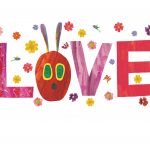
2. Life and Life Lessons
The Very Hungry Caterpillar is amazingly useful in so many ways. It creates a sensorial early literacy experience when children touch the holes on each page. When children engage their senses beyond listening during a literacy experience, they retain more knowledge. Any time that children are touching, feeling, and interacting with the text, is a win! Additionally, the very hungry caterpillar can be tied into many real-life topics and teachable moments such as the life cycle of a butterfly, eating healthy and the days of the week.
- The Grouchy Ladybug – teaches about manners and encouraging prosocial interaction to build connections with others in an appropriate way.
- Brown Bear, Brown Bear, What Do You See? is an all time classic that teaches children colours, and animal names in an abstract and imaginative way using unexpected colours like “purple cat” or “blue horse”
- Panda Bear, Panda Bear, What Do You See? and Polar Bear, Polar Bear, What Do You Hear? have the same predictable patterns. Panda Bear addresses endangered animals, which can be a great way to tie in social studies. You can identify where the animals in the book live on a map and talk about ways to help these animals by doing things like taking care of the environment.
3. The Illustrations are AMAZING!
Eric Carle’s art is distinctive and instantly recognizable. His artwork is created in collage technique, using hand-painted papers, which he cuts and layers to form bright and cheerful images. The brush strokes show texture and dimension and a signature creation that can only be connected to his unique style. A true work of art on every page!
These books inspired us to create our own book using his technique. Here’s what we did, and you can do this at home too!
- Paint an open-ended abstract picture.
- Ask the child to name their favorite animal.
- Cut out the painted picture into strips or shapes.
- Glue the pieces together in the shape of their favourite animal. They may need some assistance with this part.
- Add the text in the format “Child’s Name, Child’s Name, what do you see?
- Record the name of the animal and colour with the text. “I see a Colour Animal looking at me!”
- You can laminate the page and create more pages to make a book. Assemble the pages with a hole punch and binder ring.
Voila! You have your own homemade “Eric Carle” style book that your family will treasure! Our children love to make homemade books and keep going back to read them over and over again!
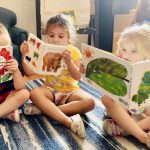
Take a look at our metamorphosis project video.
Mindful Mud – An Essential Play Experience!
Mindful Mud – An Essential Play Experience!
While the idea of getting messy to some may be unappealing, especially a parent or caregiver that has to clean up the mess! For those that may be skeptical, consider all the benefits of playing in the dirt.
The earthy goodness of mud gives our kids an opportunity to engage in messy play, practice mindfulness and connect with nature. Think of a time when you made a sandcastle and suddenly lost track of an hour. That was you, feeling the effects of mycobacterium vacate. This is a big word for the microscopic bacteria in dirt that increases the serotonin level in our brains, making us feel happy and relaxed.
Our young technologically savvy generation of kids are just not getting enough time to play outside – especially with online learning and technological distractions. While you can simulate many experiences virtually these days, playing in the dirt is not on that list.
Have you ever noticed that children who play outside laugh more? And laughter leads to feeling good! Kids who play outside also grow in their character development: they become more adventurous, more self-motivated, and they are better able to understand and assess risk.
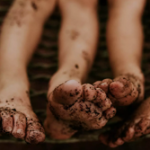
THE SCIENCE OF MUD
- MUD INCREASES BRAIN ACTIVITY– When children play with mud they use all of their senses, resulting in a highly stimulated and active brain.
- MUD INCREASES PHYSICAL ACTIVITY-When children play outdoors, and in mud, the incidental movement and physical activity increases, helping children maintain a healthy lifestyle and develop their physical literacy.
- MUD REDUCES ALLERGIES & ASTHMA SYMPTOMS -Dirt is also great for the immune system, especially in children. Research has shown that early exposure to naturally occurring microbes in soil will help build stronger, more disease-resistant kids.
- MUD PLAY BUILDS CREATIVITY – The open-ended nature of mud play is perfect for the developing brain. There is no end to the creations, ideas and games children will invent. During this type of unstructured, outdoor play, children are not only exercising but are building their ability to form ideas, problem solve, and think critically, as well as be innovative and inventive.
Here are some ideas for your children:
- If you want to control the mess a bit or have limited space, try a mud kitchen !
- Give your child a bucket and a shovel and set them in the dirt. See what happens.
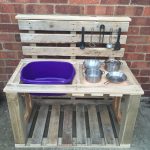
If you really want to control the mess, you can also create a DIY mud sensory bin. Check out our blog on how to create DIY sensory bins.
BabySafe Project – Pregnancy and Wireless Radiation
BabySafe Project – Pregnancy and Wireless Radiation
Have you head of the Babysafe Project? I recently became aware of this project which addresses a very serious issue affecting our future generations of children. What is the impact of widely used wireless technology on the unborn?
I have always been in awe of the process by which humans come into existence. From a single cell to a growing fetus to a baby born into this world full of life! Many women who learn that they are pregnant start to eat differently, take care of themselves and feel a strong sense of responsibility for this new life inside them.
Over time, we have learned more about environmental impacts to children within the womb. From the food you eat to the water you drink to even the air you breathe can all have an impact to that new life growing inside you. It may seem overwhelming but knowing the risks and things you can do to reduce harmful exposures is within your control.
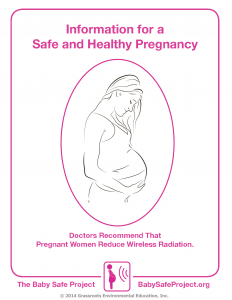
The Babysafe project focuses on one key environmental influence – wireless radiation. They point to scientific research that indicates that wireless radiation exposure can be harmful – even carcinogenic – to your baby and therefore should be avoided or reduced. Visit www.babysafeproject.org to learn more about the science and research and the effects of wireless radiation on both you and your child.
So, what can you do to reduce or eliminate your wireless radiation exposure risk? First and foremost, is awareness of the issue. Spread awareness to everyone you know about the risks and steps you can take to protect yourselves and your little ones.
Here’s some simple steps to reduce exposure to wireless radiation:
1) Do not carry your cell phone on your body – not in your bra or pocket
2) Don’t hold the cell phone, tablet or other wireless electronic device against your abdomen
3) Avoid cordless phones – especially in your bedroom – phones with a cord don’t emit radiation!
4) Streaming results in higher levels of radiation exposure – try to download and then use it in “Airplane mode”
5) Use connected wired devices for your computers instead of wireless
6) Unplug your WiFi router at home when not in use (e.g. at bedtime)
We’re fortunate to have two locally-based national not-for-profit organizations that collaborate with The BabySafe Project in raising awareness about the Project. Canadians For Safe Technology (C4ST) is based in Oakville, online at c4st.org. Electromagnetic Pollution Illnesses Canada Foundation (EPIC) is based in southwest Etobicoke, online at iexistworld.org. These organizations welcome questions, have a wide variety of resources (electronic and printed materials), and meet online with parent groups who want to learn more.
More resources:
In this video, women talk about how they reduce their risk.
Lockdown Staycation Ideas – Indoor Camping!
Lockdown Staycation Ideas
5 Easy Steps to a low cost and low mess indoor camping experience
Thinking up ideas for a staycation is more challenging then ever with lockdown and stay at home orders in place. Planning ahead can be difficult with the uncertainties of the pandemic. We all look forward to long weekends. In Canada, May 24th is a holiday in honour of Queen Victoria’s birthday and is considered the first long weekend to kick off the summer season. For many Canadians, it means the beginning of camping season, gardening and local festivals, concerts, outdoor markets and picnics. While we can still enjoy some of these outdoor activities, the options are limited by the restrictions of the pandemic. Here’s a staycation idea that actually works really well during a pandemic.
Have you every tried camping in your own home?
Chances are that there is more then one of you out there thinking that even camping in your backyard sounds like a task you are simply not up for.
What if I told you that you are not the only one? It doesn’t have to be difficult. And it can be a lot of fun for both you and your kids!
What if I told you can now camp with the kids, with no packing, no driving, no paying for campsite rental, no bugs, no questionable bathrooms, and you can sleep in your own bed?
This is an opportunity to glam it up with your own style and it will certainly be a post-worthy experience to share – Don’t forget to tag us.
Here’s 5 Easy Steps to create that perfect at-home indoor camping experience!
- FORT – Set it up!
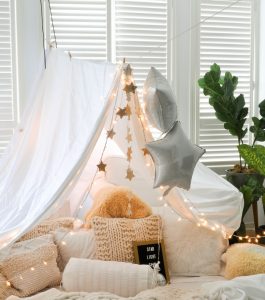
No camping experience is complete without a tent. Depending on the age of your children, you can choose to make this an all-hands-on deck project with the children helping set up your camp site or you can make it a surprise. This can be your child’s bedroom, basement or living room area. Notice I am not mentioning outside 😉!
Make it -check out these links for tents you can create with minimal supplies or talent.
https://www.artbarblog.com/easy-forts/
http://www.thriftyandchic.com/2016/01/diy-4-sided-drop-cloth-teepee-for-20.html
Add mini lights & decorations for a pitch-er perfect tent!
2. FOILAGE
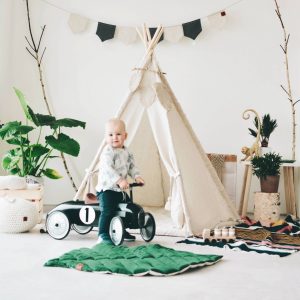
Bring the outdoors in! This is really just an extra little thing you can do to bring the outdoors in and enhance the camping experience.
You can gather Outdoor items, stones, logs, branches, indoor or outdoor plants to place around the “campsite” or even setup an artificial tree.
3. FIRE-Spark it up
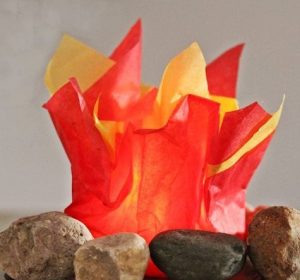
One of the best parts of camping is the bonfire! A bonfire is the perfect place to gather round and sing a campfire song, or tell funny stories. It’s also a great place to read books.
Make it- click on this link for an easy way to build a crafty campfire.
http://aboutfamilycrafts.com/how-to-build-a-campfire/
4. Food- Feed the fam!
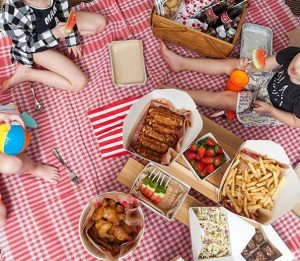
If you don’t have a fireplace to roast marshmallows the next best thing to the campfire is a BBQ. Grill some hamburgers, hot dogs, corn or make simple PB&J sandwiches. You can even roast marshmallows by holding a stick above the heat of the BBQ grill.
Whatever you decide to do – Keep it simple!
Here are 3 S’more options to enhance your camping staycation
Make it-Microwave Smores- https://shelfcooking.com/smores-recipe/
Smore snack bag- https://ziploc.com/en/Recipes/Sweets-And-Desserts/S-Mores-Mix
Make sure you take a nice walk after those sugary smores and tire out those kiddo’s so everyone gets a good night sleep including Mom & Dad!
5. FUN!
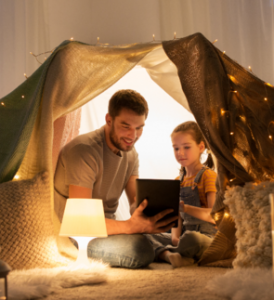
Last but not least, Have Fun!!!
Hopefully by now the kids are tuckered out and ready to retire to their sleeping bags. Before they do, make it dark, turn on those string lights, lamps and flashlights and play with the shadows. Add in some soothing nature sounds and soothing music too!
You can even make your own stars on the ceiling with a flashlight! Just cover the flashlight with black paper and cut out the stars.

More ideas to add to your indoor camping experience:
Read some camp related stories
https://www.pre-kpages.com/books-camping-preschool/
Shadow puppets
https://whereimaginationgrows.com/exploring-light-with-shadow-puppet-play/
Starry sky flashlight
https://happyhourprojects.com/make-a-starry-night/
To learn more about Alpha’s Discovery Kids Programs, click here!
Mother’s Day Pandemic-friendly Mommy and Me Ideas
Mother’s Day gifts you can give yourself
As a mom, time spent with your children doing things to grow and learn together is one of the best gifts you can give yourself for Mother’s Day. During a pandemic, it may seem that our choices for activities are limited. This year, what better way to celebrate then to get outside and soak up some immune-boosting Vitamin D! Sunshine and fresh air provide so many health benefits to boost your immunity and mental health. Give yourself a gift that will create lasting memories this year. Here are 3 ideas that will leave you with a smile, tired little children and hopefully a few great photos. You don’t need to go too far .These 3 activities can be done in your own backyard, neighbourhood trail or park.
YOU’RE A NATURAL
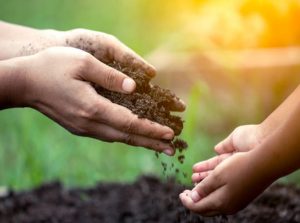
1.GET YOUR HANDS DIRTY TOGETHER AND DO SOME PLANTING
Anyone can be a be a gardener even if you do not have a green thumb or a big garden. Planting can be done in a garden, garden box or even a container you may already have at home. For instance, a jar, a bowl, or box. You can even have your child paint the flowerpot before or after. You choose the size of your project. Pick up some seeds or little plants and some soil at your local garden centre or grocery store. You and your child can get your hands dirty together and create some new life! This growing garden or plant is a gift for you all season long!
EASY TO GROW PLANTS FOR KIDS- CHECK OUT THIS LINK
YO’MAMA
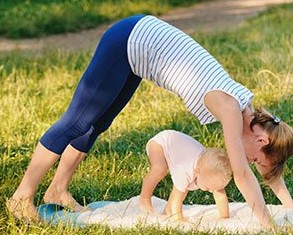
- STRETCH & BREATHE TOGETHER AND DO SOME OUTDOOR MOMMY AND ME YOGA
Practicing yoga with children is one way to build a great relationship with them. Doing simple yoga poses together can help both parent and child to relax, be in the moment, and obtain physical activity at the same time. We know yoga is good for flexibility, but yoga can also help with anxiety and muscle development for both adults and children. Combining the outdoors with yoga helps as a natural mood booster. These good feelings will help you connect and bond further with your little one. It does not matter if you are an advanced yogi, a beginner, or a newbie everyone can benefit from deep breathing and stretching. Start by just taking off your shoes, face each other and taking a few breaths. This can be on a mat, towel or in the grass. You get to choose if this will be a more an active yoga or calming yoga. You can make it up as you go along getting inspiration from your outdoor surrounds but remember to be safe and careful. Enhancing your connection with the natural world and your child through movement can be a gift you give yourself.
Nature Inspired Yoga Poses: CHECK OUT THIS LINK
MOM YOU ROCK
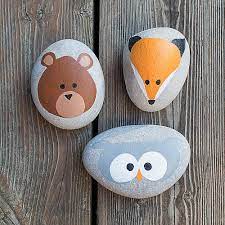
- GET CREATIVE TOGETHER AND DO SOME ROCK PAINTING
Being outdoors not only stimulates your mind but also your creativity. Art projects can be messy and often require a lot of space in which to create. So, what better place to set up a rock painting activity? Even if you do not have paint brushes you can use Q-tips or your fingers. If you do not have paint, you can use nail polish, coloured water or sharpie markers. You get to choose if this is an open- ended painting experience or want to create a special design. You can of course make finding these rocks part of your Mother’s Day experience by going on a little walk together or collect them in advance. Either way, your are left with a cute keep sake and minimal mess to boot. This is a gift you can give yourself.
ROCK PAINTING 101: CHECK OUT THIS LINK
Here’s a link to our kindness rocks activity if you want to leave some painted rocks out in the community for other’s to find.
Try one or more of these outdoor mommy and me activities and reap the benefits. No matter what you choose to do this Mother’s Day,
Yo’ mama , you ROCK !
HAPPY MOTHER’S DAY, You’re a natural !
Planting a seed to inspire learning
Planting a seed to inspire learning
Planting a seed is the simple act of setting a process into motion – both in a garden and in a classroom. As educators in the classrooms, we are always planting seeds to spark children’s curiosity, inquiry and discovery. With an emergent curriculum such as ours at Alpha’s Discovery Kids, students are empowered learners, and the teacher takes the journey along with her class.
In many cases, children spend a great deal of time in a childcare setting with limited experiences in the world, especially during a pandemic. Planning based on the children’s interests is not effective all on its own. That is why we introduce projects to expand on the child’s learning. As educators of young children, it is our responsibility to empower children and to make them a big part of their own learning. It is important to understand that it does not necessarily matter where the topic originates from, if the direction it takes from inception follows the lead of the children.
One of the ways we do this is by providing and introducing rich, developmentally appropriate materials and new topics and concepts that the children may not be exposed to yet. By providing engaging materials that encourage exploration and creativity, we can provide opportunities that are open¬-ended and through these experiences provoke further interests. The materials can be purposeful, intentional and project based without becoming teacher directed.
We are continually plantings seeds in the minds of the children to inspire curiosity with the goal of teaching the children something new. Our educators have gained confidence in knowing it will take form without direction. A seed cannot stay a seed forever once planted. When cared for with nourishing soil, rays of sunlight, and water, they change shape and start to become whatever it is they were meant to be. We apply similar parallels to our approach to child development and learning. Like all things that grow, plants, trees, flowers, we want them to flourish!
To find out more about our Four Pillars of Learning curriculum, click here.
Follow us on Facebook or Instagram to see the curriculum in action. We offer many ideas that you can also try at home!
DIY Sensory Bins – How to Make your Own Sensory Bin
DIY Sensory Bins – How to Make your Own Sensory Bin
Sensory bins are an amazing educational tool for children to learn about their world using their senses! Young children tend to gravitate toward sensory play as they tend to explore their world with their senses. The benefits of sensory play are numerous. Sensory play helps children to focus, helps them to feel calm and it develops many skills from cognitive to physical to social skills.
Recently, I saw that a local craft store was selling pre-made sensory bins for $25 but you can make your own for a lot less. At Alpha’s Discovery Kids Preschool and Daycare, we make individual sensory bins for each child and change the items in the bins almost every day. Here’s a step-by-step guide to making your own sensory bin.
To make your own sensory bin, you first need to know what it is! A sensory bin is a hands-on sensory experience for kids, in a contained area such as a storage container. It contains many different items that can be explored using your senses.
STEP 1: CHOOSE A CONTAINER
When choosing a container, consider your space and choose something that will fit in your space. The size of the bin will depend on the age of the child, but as a rule, try to find the biggest container that your child can manage. The child should be able to hold the bin and take it from a shelf independently. Plastic clear containers are best with a good lid that seals well. You don’t have to spend a lot on the container as you can usually find them at a dollar store for a few dollars.
STEP 2: CHOOSE THE FILLER
The sensory bin filler is the item that makes the sensory fun. Please note that you can change your filler often – but we recommend at least once per week to make it interesting for your child and keep it clean. Some examples of fillers are: water, sand, rocks, water beads, shredded paper, coloured Epsom salt, play dough, fake grass, fake snow, wooden beads and natural elements (leaves, twigs, soil, seeds). You can also choose food items such as beans, dry pasta and rice but we prefer not to use food items, to minimize food waste. Keep in mind your child’s age and ability when choosing a filler (including potential choking hazards) and ensure that play is always supervised by an adult.
STEP 3: ADD ITEMS
Once you have the filler, the next step is to add items that spark the child’s interest. One of the best parts of sensory bins is all the filling, dumping, pouring and transferring that takes place! When adding items, you are only limited by your own imagination – or your child’s if they choose their own items to add. The items you add will depend on what type of filler – for example, you will have different items if the filler is water vs. wooden beads. Here’s some ideas for items: sifter, sieve, smaller containers, watering can, shovel, buckets, animals, dinosaurs, cars, dolls, spoons, small bowls, rolling pin, cookie shape cutouts, etc. You can also choose a theme for your bin to focus the learning on a specific concept – such as bugs, oceans, or rainbows.
Step 4: HAVE FUN!
The best part of making sensory bins, is getting to enjoy them with your child! We encourage you to play and explore along side your child!
For more information about our Four Pillars of Learning Curriculum, visit our curriculumcurriculum page.
For more ideas on how to engage with your child, visit our Youtube page.



